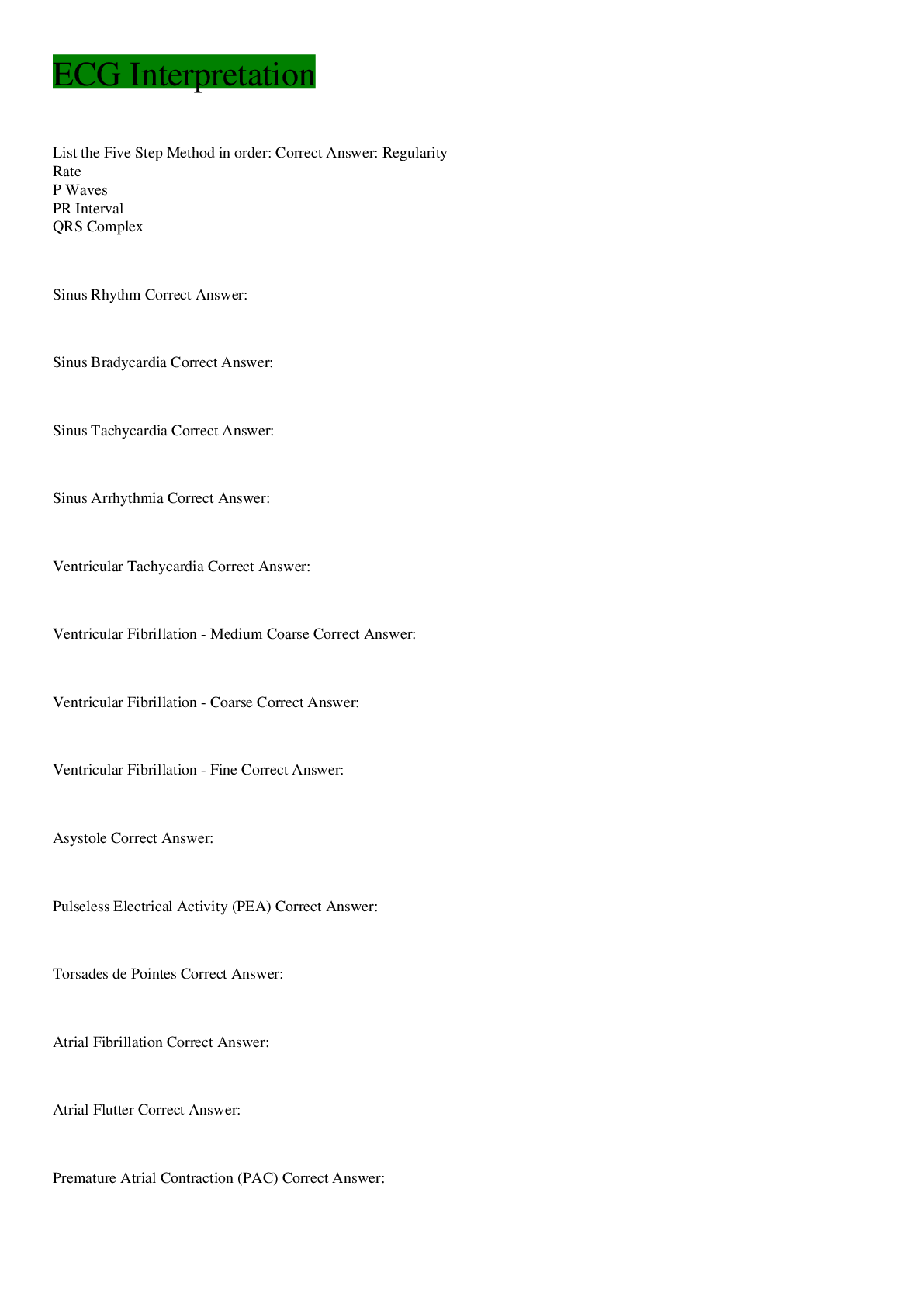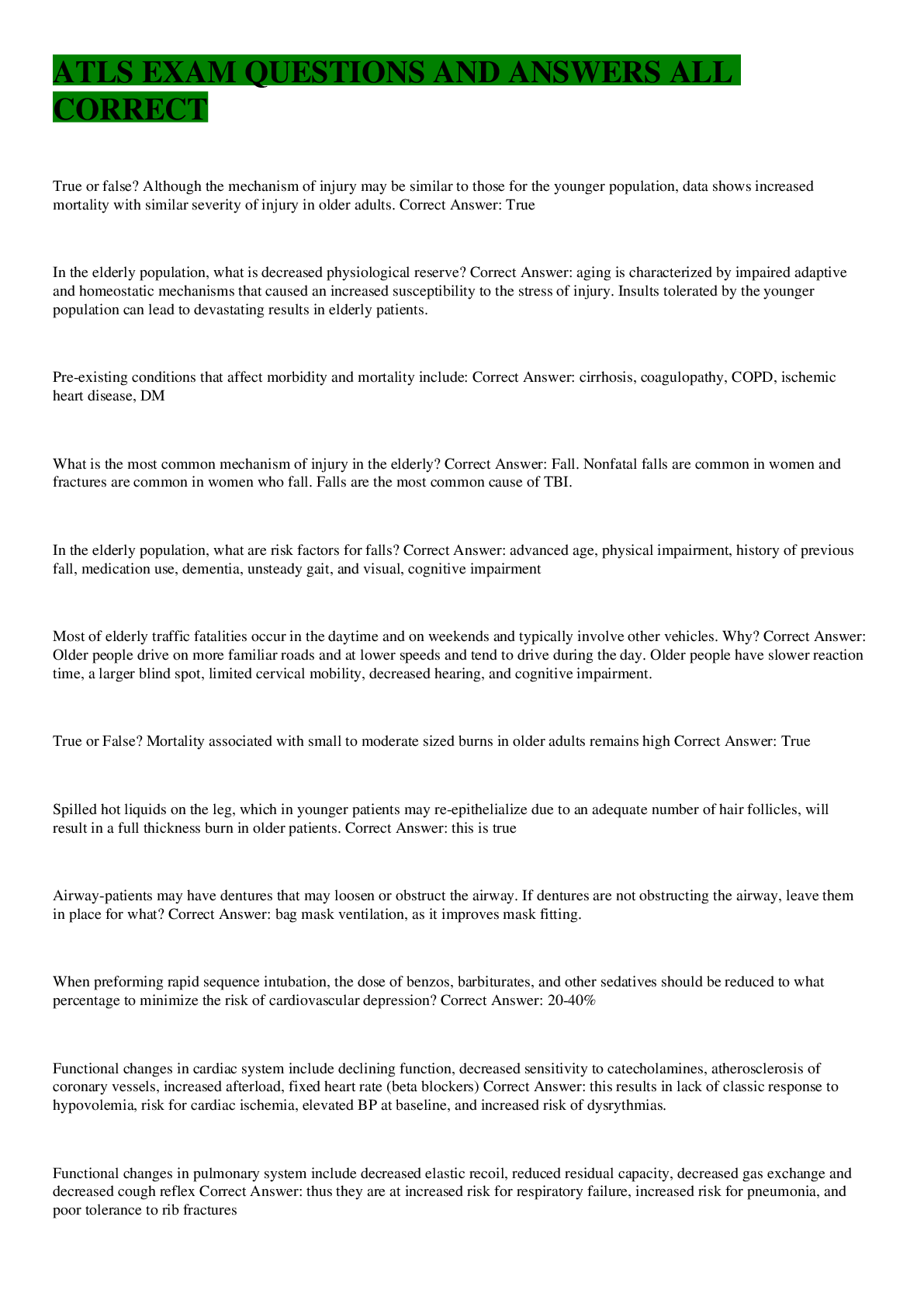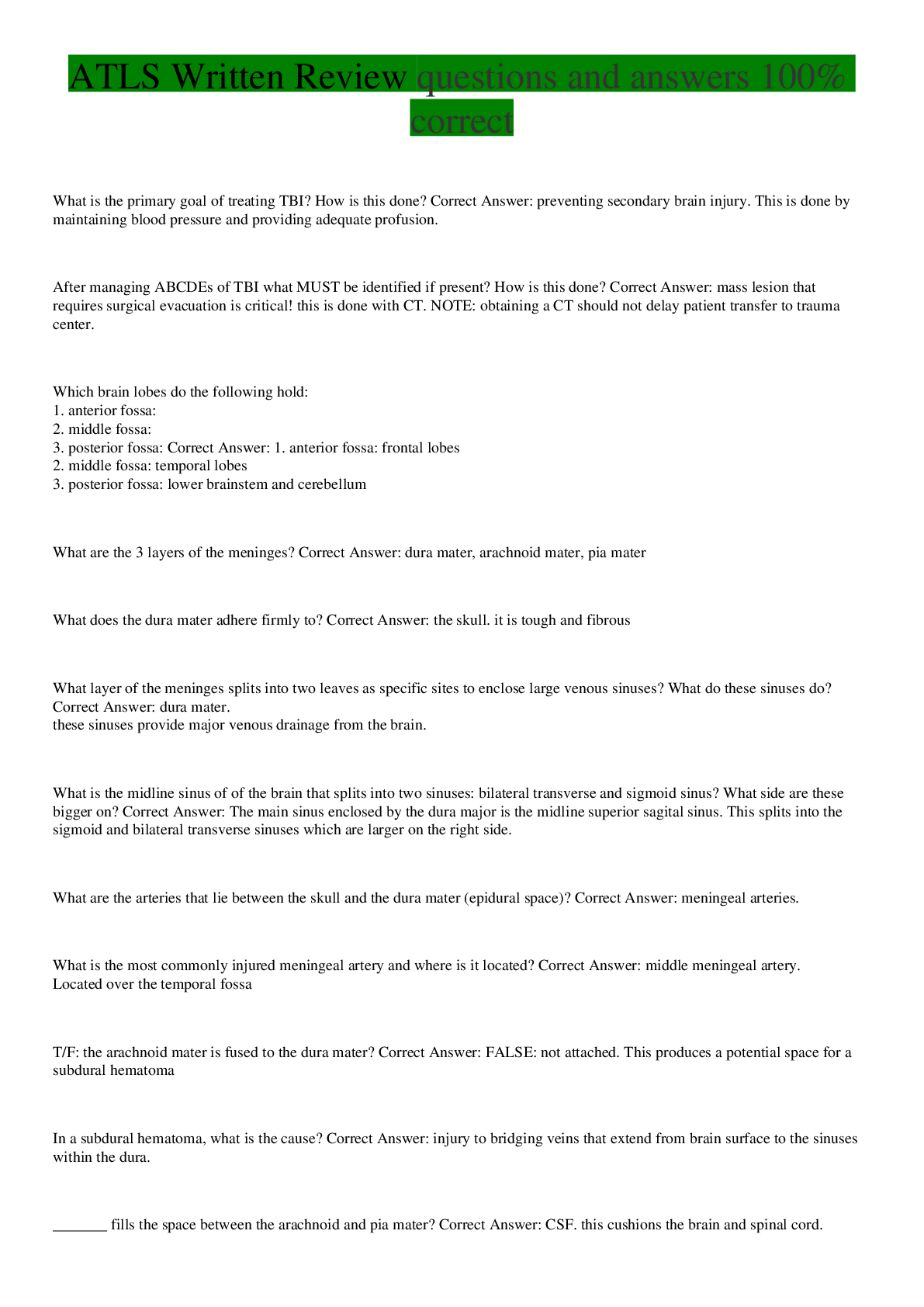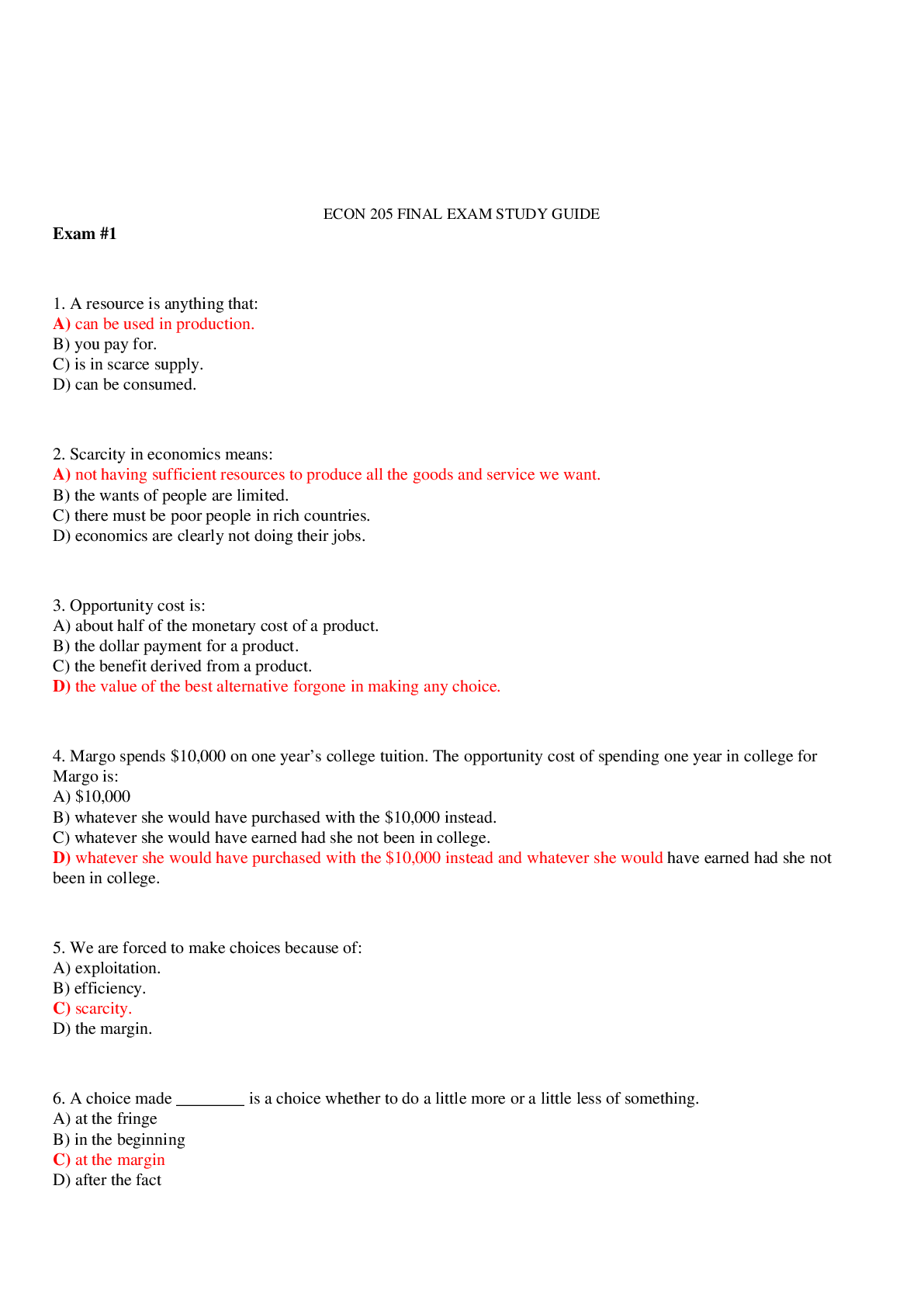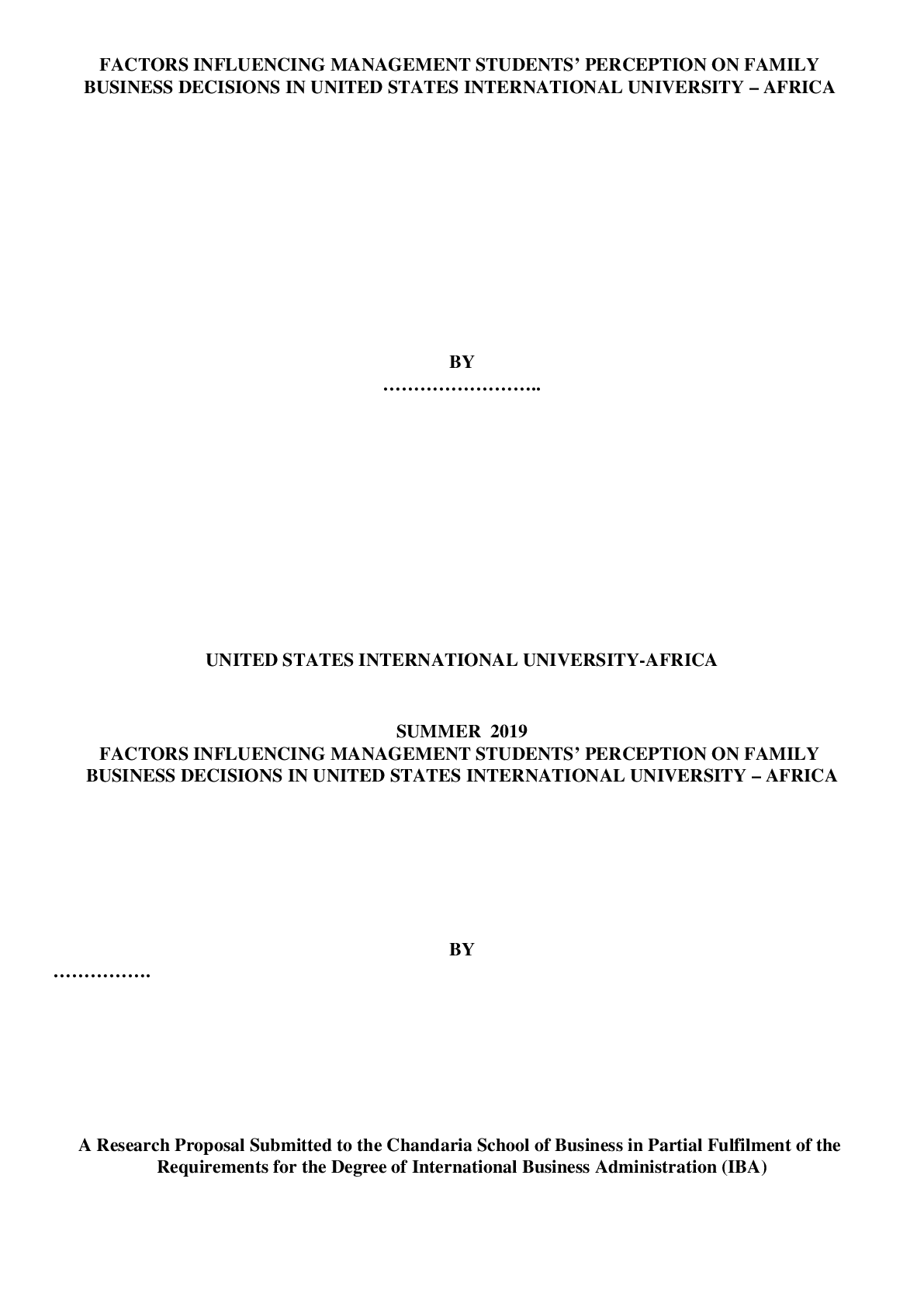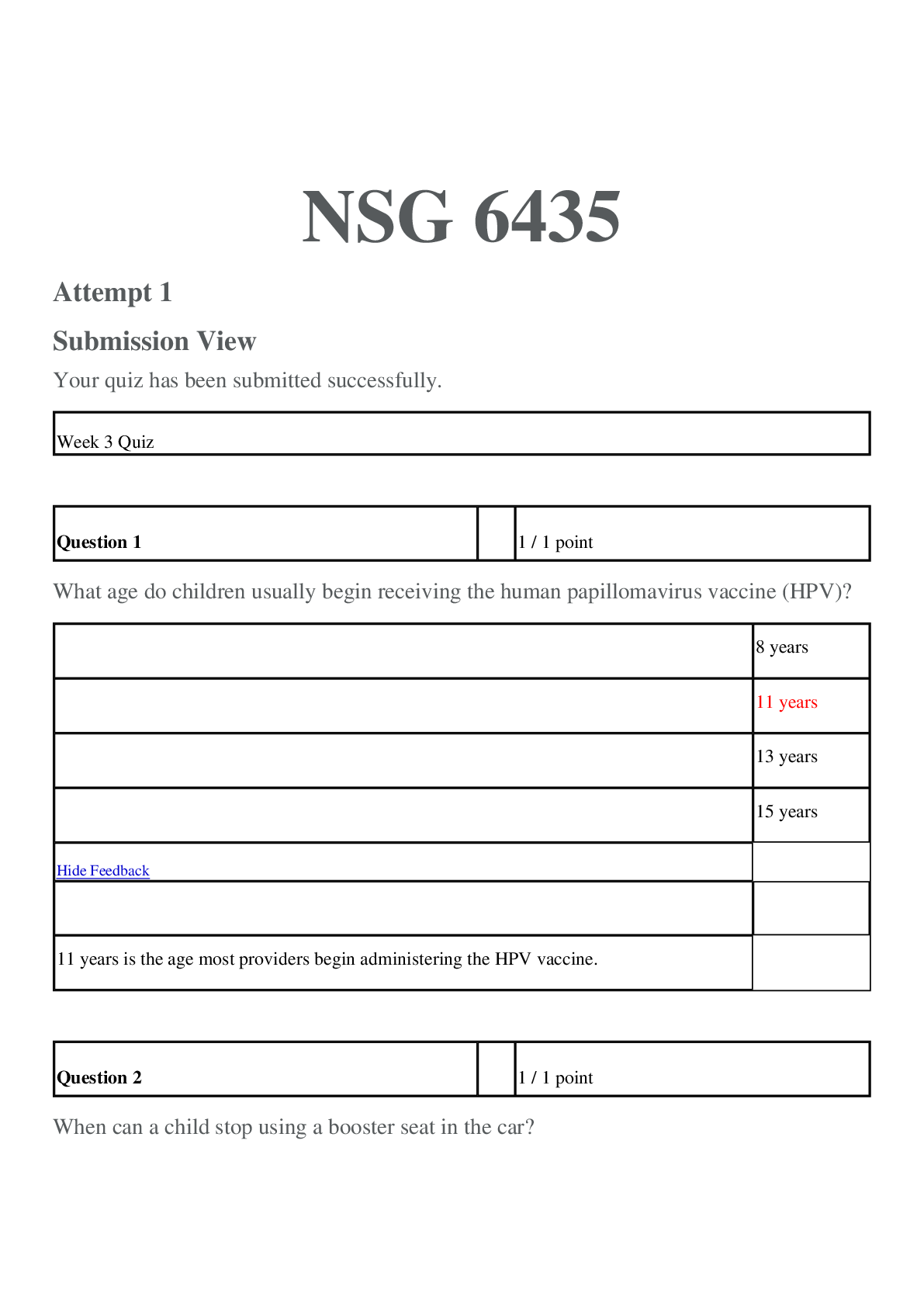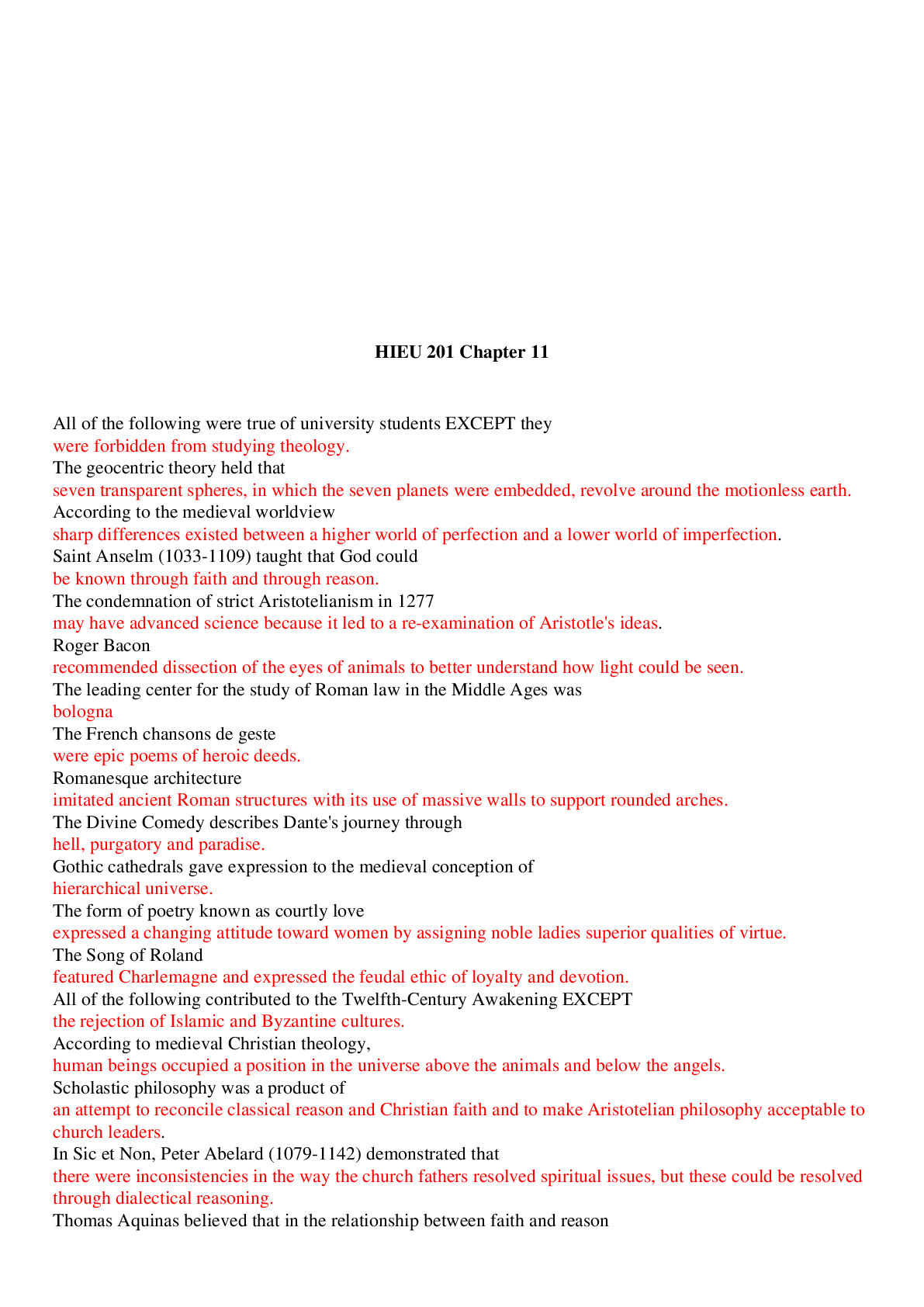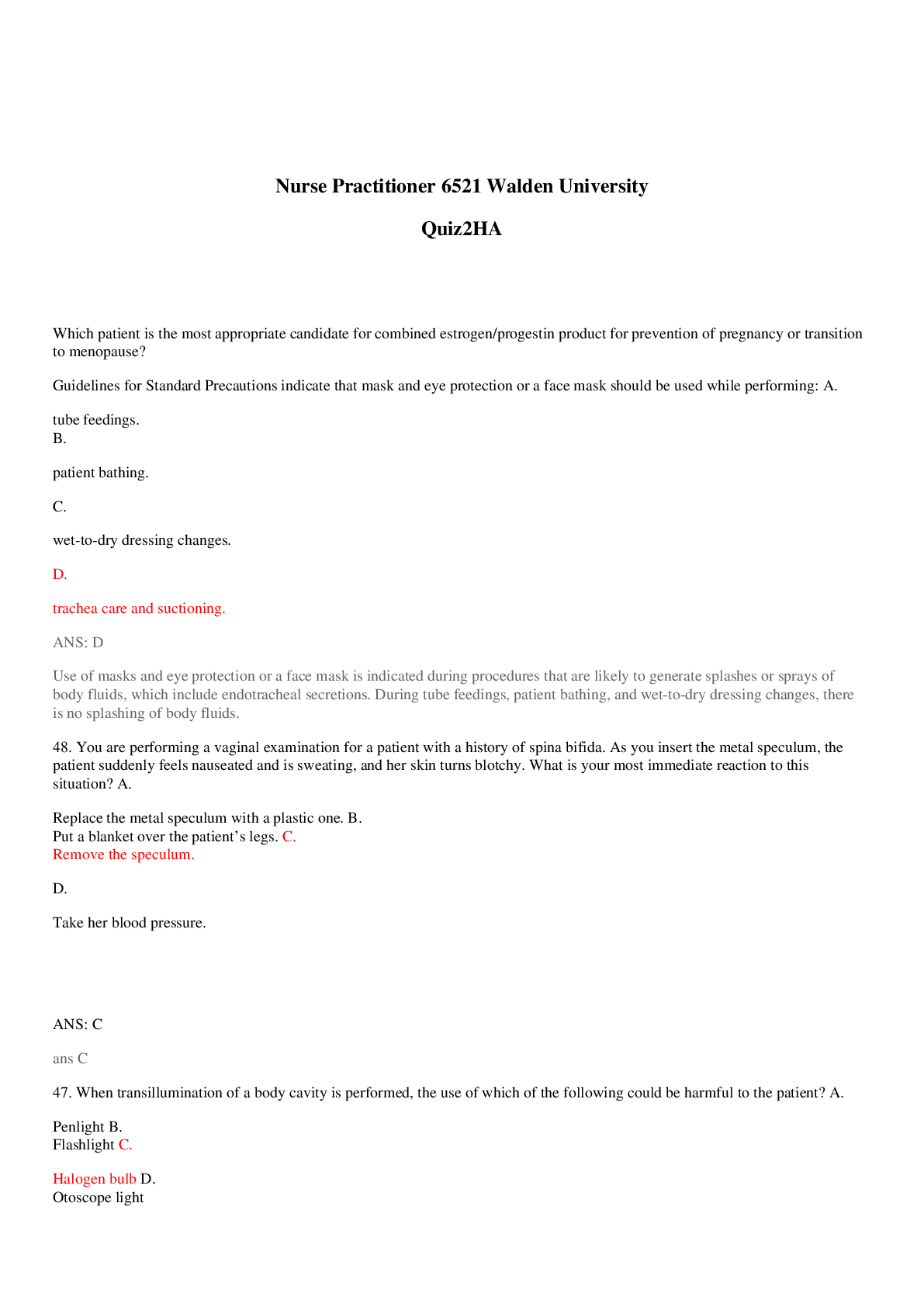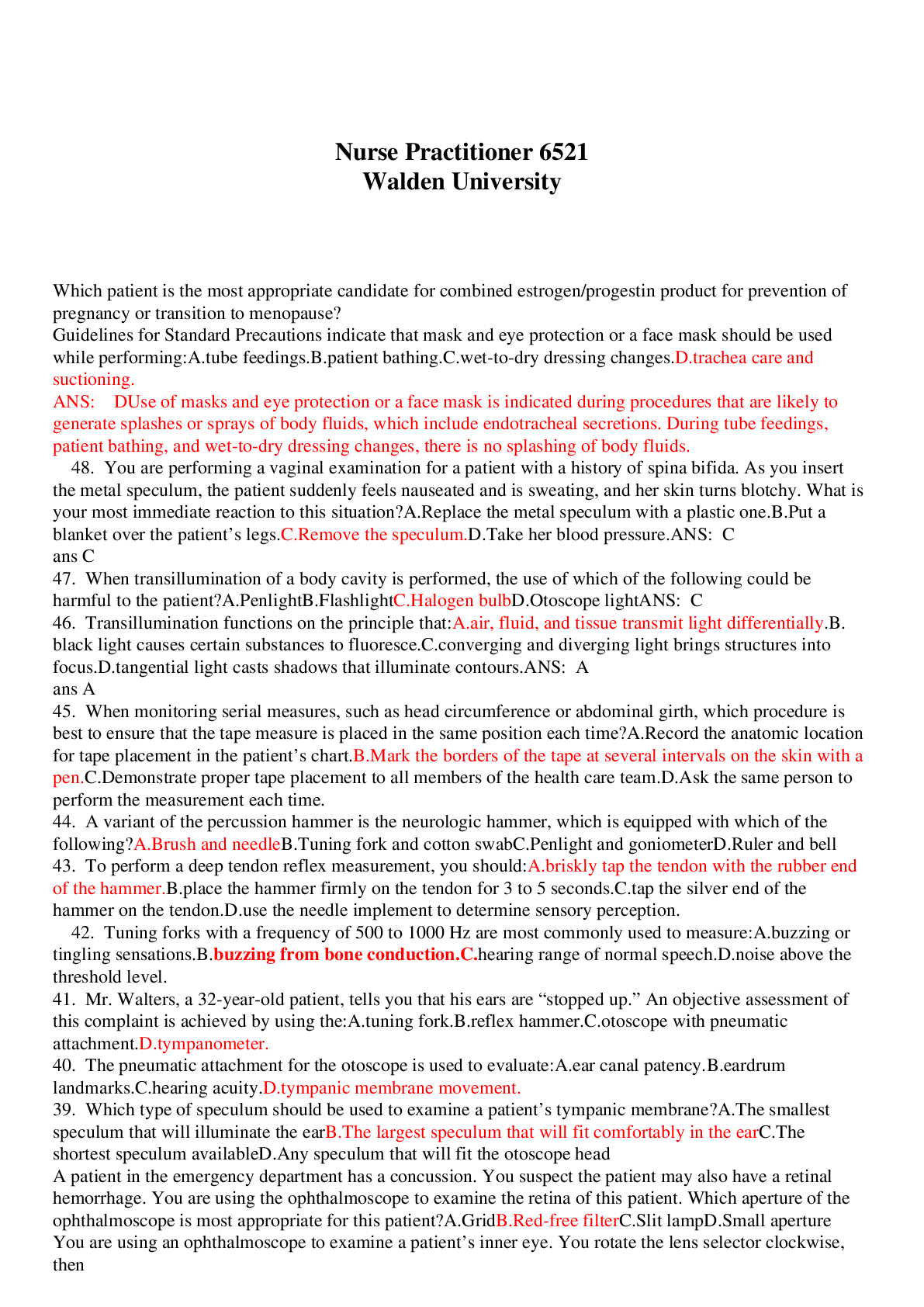Health Care > EXAM > MIDTERM NURSING INTEGRATION 2019 (All)
MIDTERM NURSING INTEGRATION 2019
Document Content and Description Below
MIDTERM NURSING INTEGRATION 2019. 1. TPN care: IV pump required, change tubing and bag every 24h, do not add medications, Lipids piggybacked in TPN COMPLICATIONS: hyperglycemia, infection. Moni... tor weight, I&O, electrolytes. 2. BENEFICENCE: to do good, to prevent or remove harm or evil = best interests of the client. 3. INFORMED CONSENT: Client’s acknowledgment and acceptance of medical treatment. REQUIRES: explanation, alternatives and risk factor of the procedure. INFORMED CONSENT IS VALID: 18 years or emancipated minor, mental capacity to consent. ROLE OF NURSING: Client signs the consent voluntarily. Client understand the procedure Client does not have further questions 4. LIVING WILL: is a legal document that expresses the client’s wishes regarding medical treatment in the event the client becomes incapacitated and is facing end-of-life issues. 5. POWER OF ATTORNEY: A legal document that appoints a person or persons chosen by the client to carry out his or her wishes about health care, or to make decisions on the client’s behalf when he or she is no longer able to do so. 6. DELEGATION OF LPN: Stable patient with predictable outcome. Monitoring client findings (as input to the RN’s ongoing assessment of the client). Reinforcing client teaching from a standard care plan. Performing tracheostomy care and suctioning. Suctioning. Checking nasogastric tube patency. Administrating enteral feedings. Inserting a urinary catheter. Administrating medication (excluding intravenous medications in several states) Wound care. 7. DELEGATION OF UAP: Activities of daily living (ADLs) Bathing Grooming Dressing Toileting Ambulating (never first time after surgery) Feeding (without swallowing precautions) Positioning Bed making Specimen collection Intake and output (I&O) Vital signs (for stable clients) BLOOD TRANFUSION STEPS: informed consent, 18-19 G catheter, Y set with filter primed with NS, verify with other RN, initiate within 30 min received blood, not add medication, begin at 2ml/h, check BS every 5 min for 15-30 min, administer within less than 4h. 8. MRSA PRECAUTIONS: contact: wear gloves and gown. MIDTERM NURSING INTEGRATION 2019 9. RESTRAINS PROTOCOLS: needs physician order, PRN prescriptions are not allowed, informed consent is required, renew every 24h. 10. TRACHEOSTOMY CARE: observe for excess secretions, air obstruction and coughing, remove soiled dressing, after disconnecting remove inner tube for cleaning, clean exposed parts of the outer tube, without removing trach tube install new ties and removed the old ones. 11. Thrombophlebitis Nursing Interventions: warm compresses 12. Chemotherapy and certain foods to avoid: Hot, spicy (hot pepper, curry, Cajun) High fiber (raw fruit and vegetables, coarse whole grain) Fatty, greasy, or fried foods Rich deserts Nuts, seeds, or dried fruits. 13. Endotracheal Tube (Care and measurement): Observe for right bronchi mono-intubation, Mark incisor tooth or lip line, reposition side to side, Check cuff pressure frequently: 15 - 20 mmHg, Drain condensate water in tubing. 14. Steven Johnson Syndrome signs and symptoms/Precautions: tiredness, lethargy, headache, fever, rash, blisters, flu-like Prevention: avoid the medications that trigger it. 15. Placenta Previa: bright red and painless bleeding 16. PLACENTA ABRUPTIA: dark red, painful bleeding 17. NONSTRESS TEST: fetal heart rate monitoring. REACTIVE: two or more decelerations of 15 bpm lasting 15 seconds over 20 min NON-REACTIVE: test does not meet criteria after 40 min (is the baby is sleeping try test for 20 min more). 18. Variable Decelerations: the shapes vary V, U, or W. Can be not necessarily associated with the mother’s contractions, abrupt <30 sec from onset to nadir ETIOLOGY: cord compression, oligohydramnios, cord prolapse. 19. Mastitis Nursing Interventions: Instruct the mother in breast hygiene measures. Apply heat or cold to the site as prescribed. Maintain lactation in a breastfeeding mother. Encourage manual expression of breast milk or use of a breast pump every 4 hours. Support her breasts with a supportive bra. Administer analgesics or antibiotics as prescribed 20. G- GRAVITY a. T- TERM BIRTHS (PAST 38 WEEKS) b. P- PRETERM (20-37 WEEKS) c. A-ABORTIONS d. L- CURRENT LIVING CHILDREN 21. FUNDUS LOCATION: 12-14 weeks: slightly above the symphysis pubis. 16 weeks: between symphysis pubis and umbilicus 20-22 weeks: level of umbilicus 36 weeks: at xiphoid process 22. Subinvolution: Incomplete involution or failure of the uterus to return to its normal size and condition after delivery. CAUSES: retained placental fragments & infections. 23. Pregnancy and HTN: SYSTOLIC > 130 DIASTOLIC > 75 (diet and lifestyle changes) 24. PREECLAMSIA: appears after 20 weeks gestation-6 weeks post delivery BP 140/90 Proteinuria Edema TX: Metildopa, labetalol, hydralazine PO 25. ECLAMPSIA: BP 160/110 PROTEINURIA Anasarca (generalized edema) Triggers DIC (disseminated intravascular coagulation) Seizures, coma Tx: IV hydralazine, Mg sulfate (anticonvulsant) 26. Mg assessment: RR: 12-16 DTR: +2, +3 DIURESIS: 30 ml/h MG blood level 5-8 27. Ectopic Pregnancy signs and symptoms: pelvic pain, lower abdominal pain, scan and dark vaginal bleeding, missed period. 28. INSULIN AND PREGNANCY: should decrease in the first trimester because of increased insulin production by the pancreas and increased peripheral sensitivity to insulin. 29. APGAR SCORE: 1, 5, 10 min INTERPRETATION: 7-10 healthy 3-6 moderately depressed 0-2 severely depressed. 30. Newborn Jaundice Assessment: Pathologic: appears in first 24h Physiologic: appears after 24h and is benign. Assessment Findings: Jaundice Elevated serum bilirubin level Enlarged liver Poor muscle tone, lethargy, and a poor sucking reflex 31. ACUTE OTITIS MEDIA: risk increase when the child lives in smoking environment (passive smoking) Medications: Acetaminophen (Tylenol) or ibuprofen (Advil) to provide analgesia and reduce fever Antibiotics: Amoxicillin (Amoxil), amoxicillin-clavulanate (Augmentin), and azithromycin (Zithromax), Benzocaine (Americaine-Otic): Ear drops for topical pain relief. 32. AFP: Used to detect neural tube defects 33. PKU: inherited error in metabolism, babies are tested 24h after milk and retest 7-10 days to catch early false negative. Can cause: mental retardation, convulsions, behavior problems, skin rash, musty body odor. If positive NO meat, da [Show More]
Last updated: 1 year ago
Preview 1 out of 12 pages
Instant download
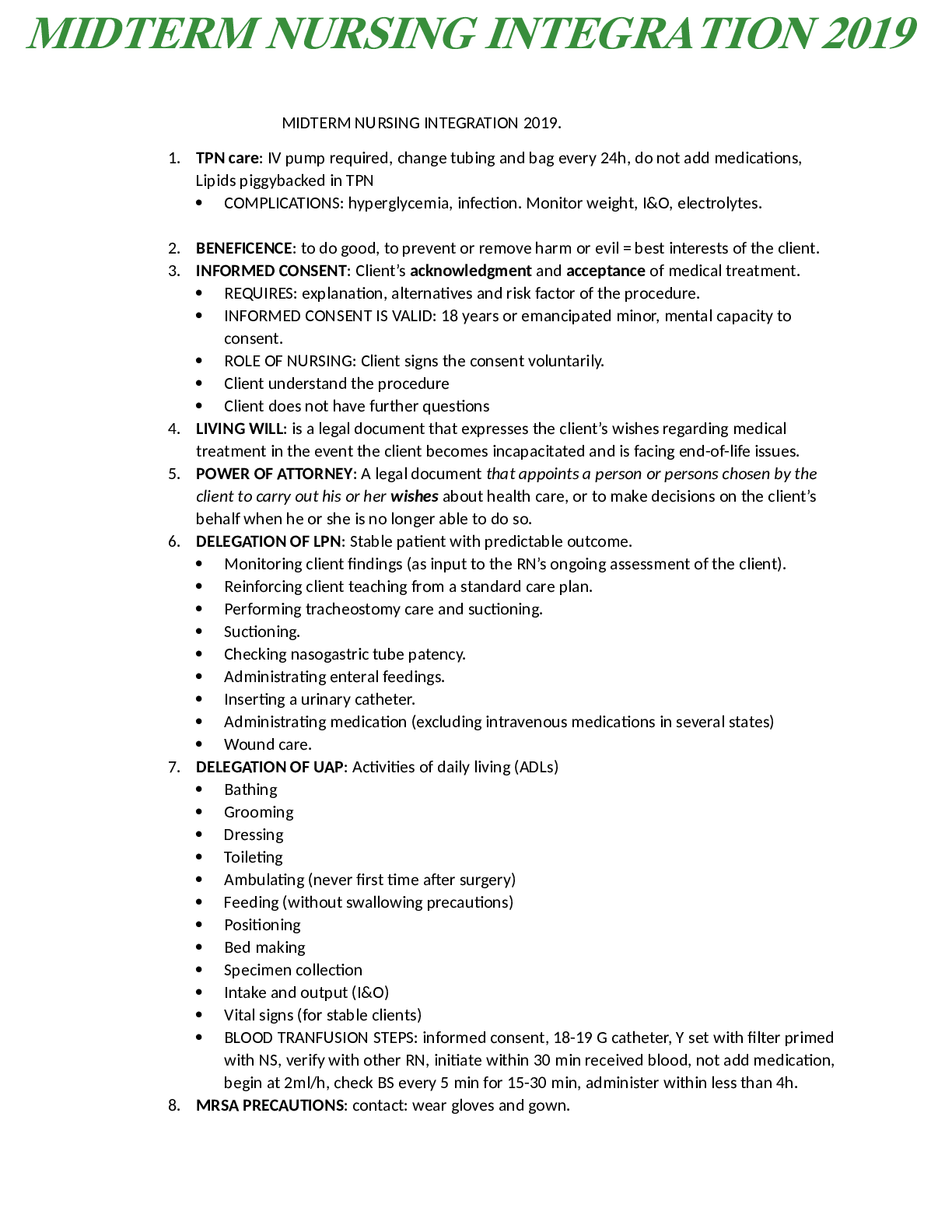
Buy this document to get the full access instantly
Instant Download Access after purchase
Add to cartInstant download
Reviews( 0 )
Document information
Connected school, study & course
About the document
Uploaded On
Aug 31, 2022
Number of pages
12
Written in
Additional information
This document has been written for:
Uploaded
Aug 31, 2022
Downloads
0
Views
21




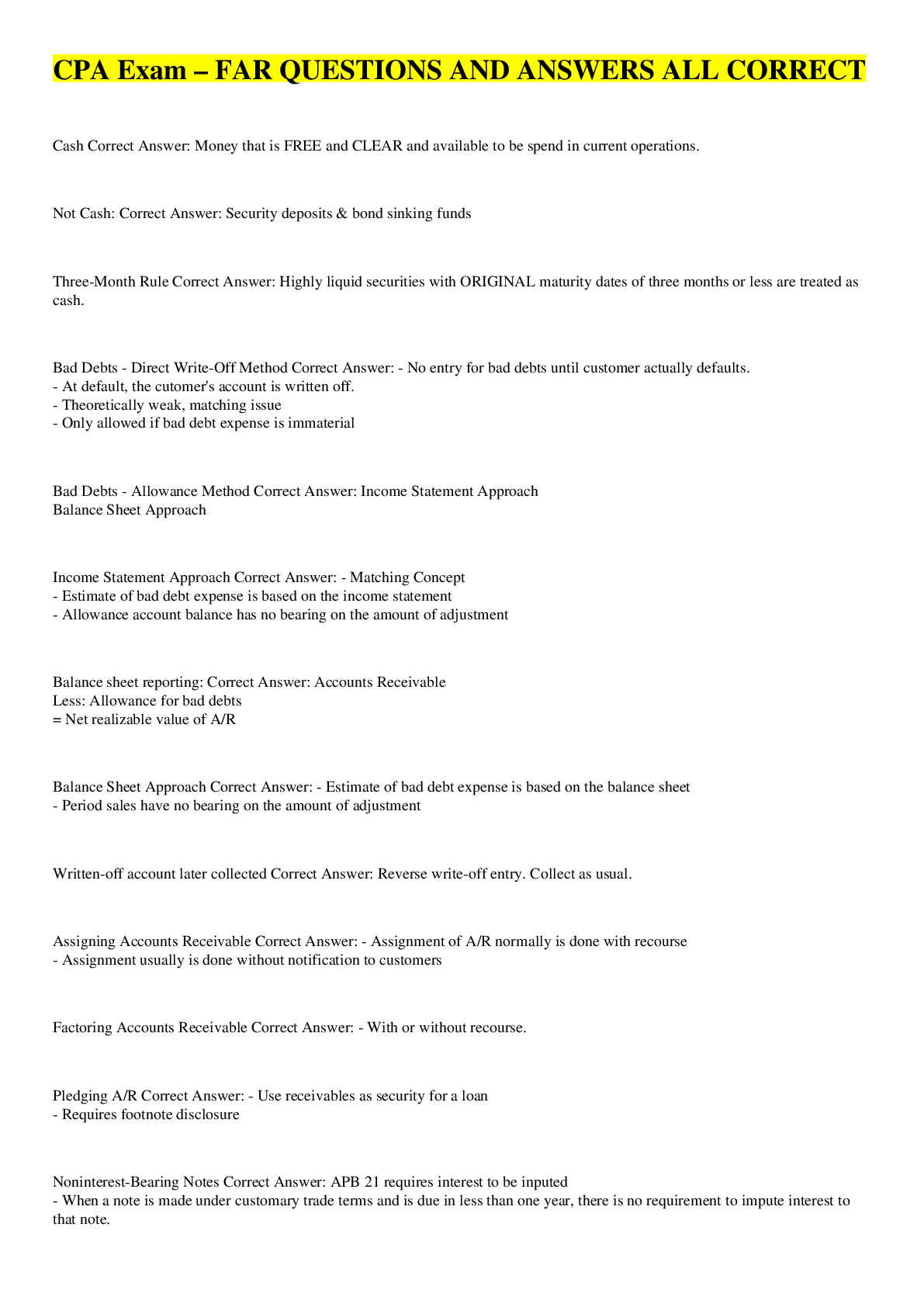
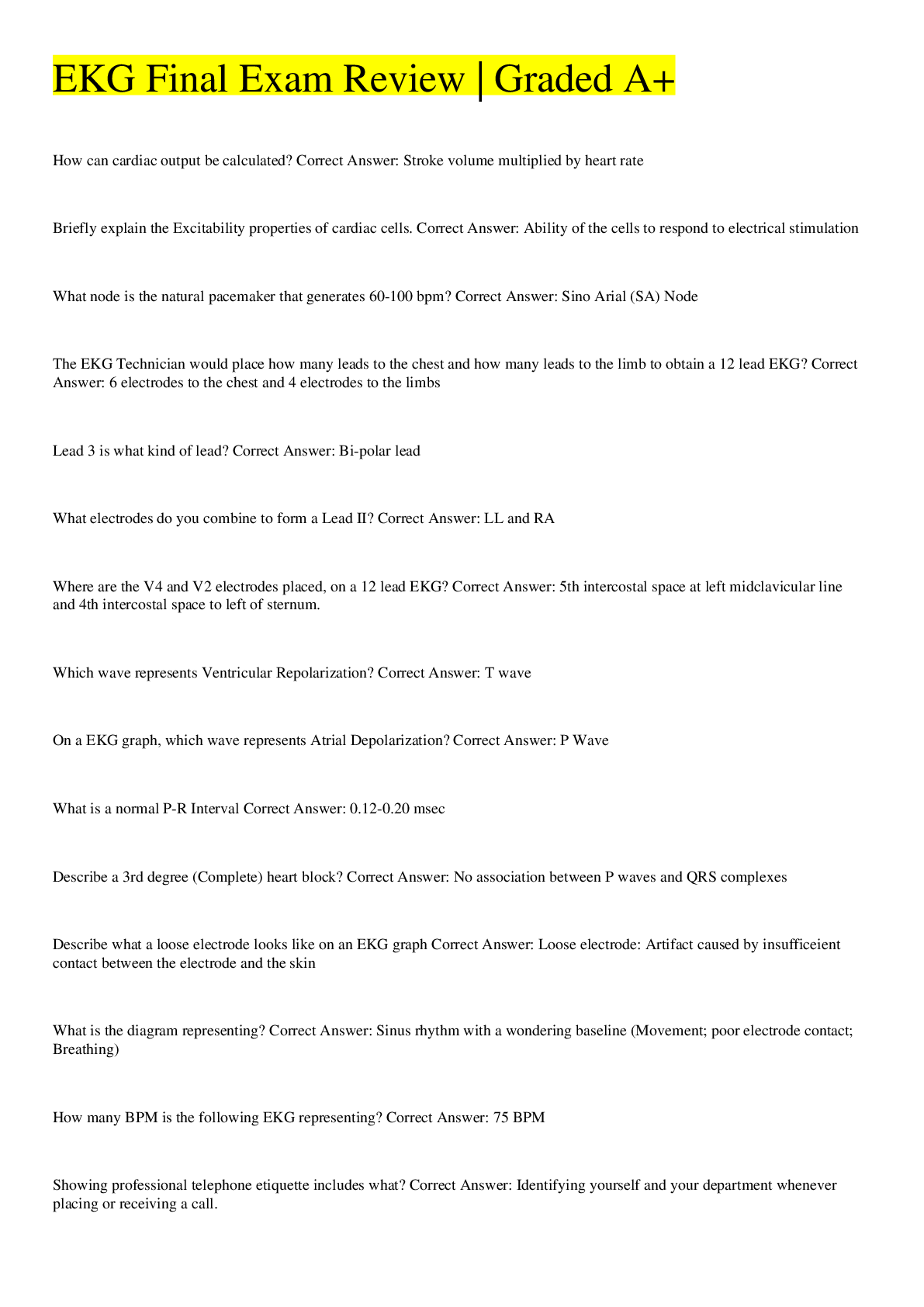

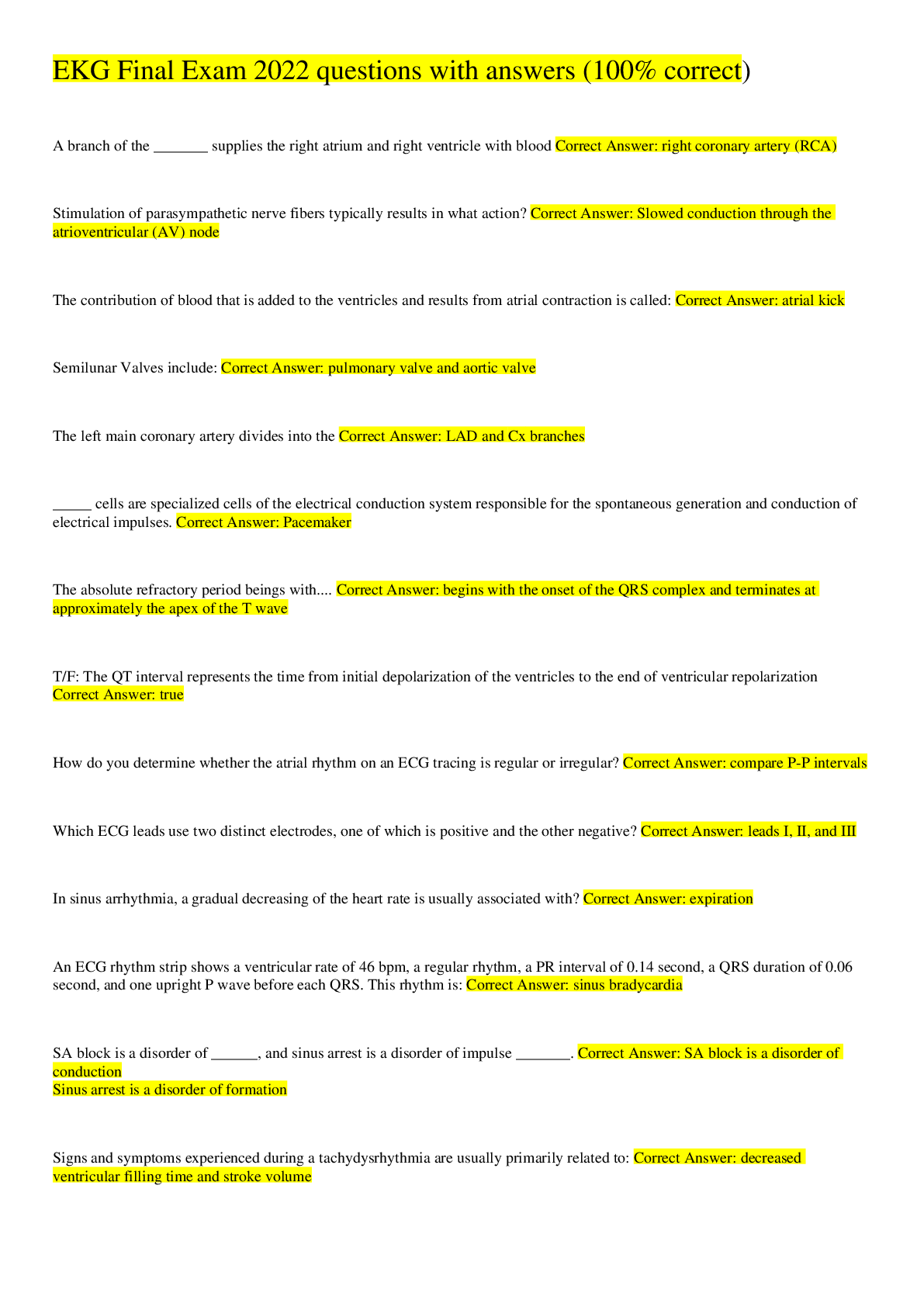
.png)
